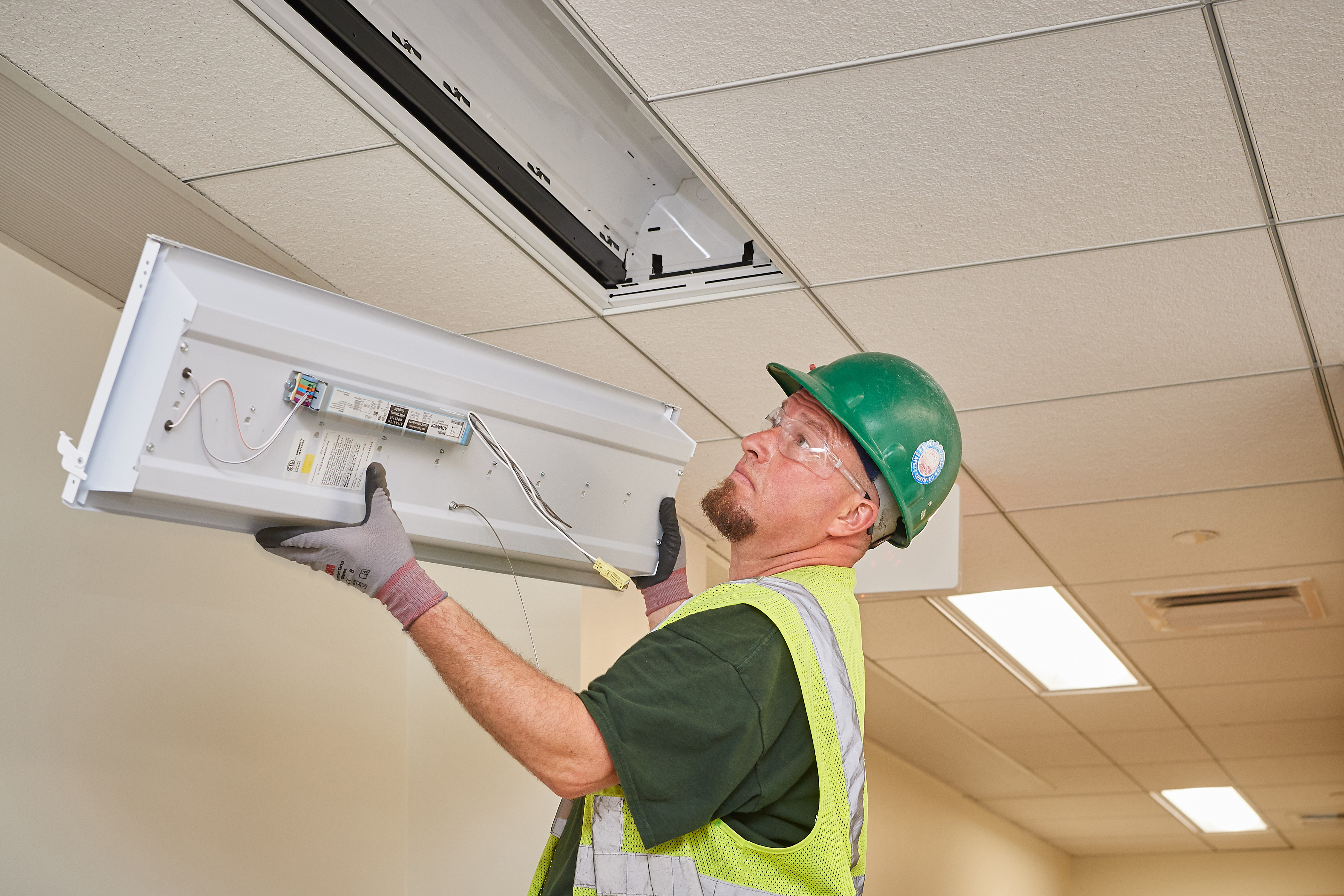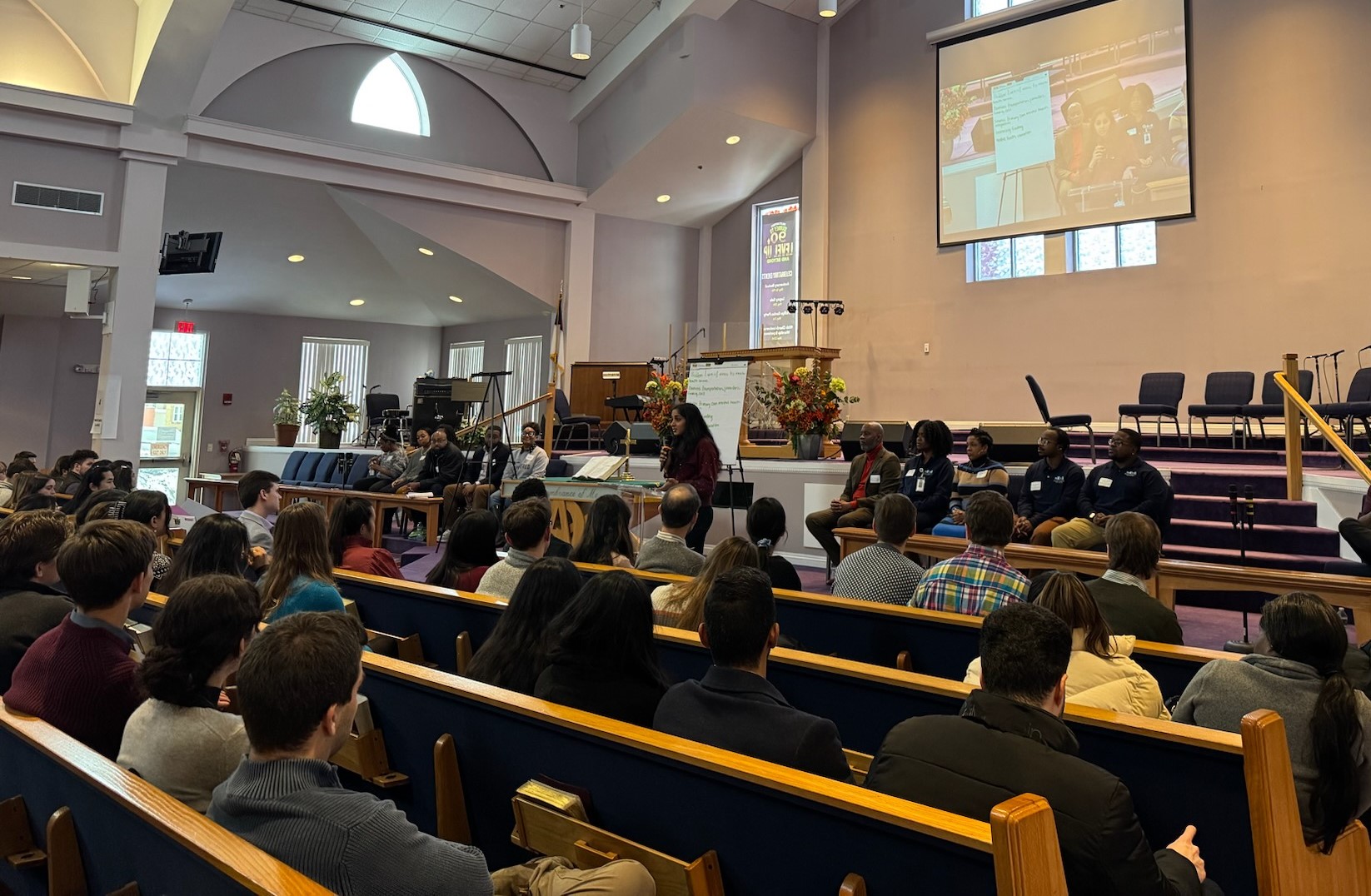“Turn off that light, you’re wasting energy!”
Who didn’t hear that constant plea from a parent or guardian while growing up?
Now apply that principle to an entire campus. That’s the task of Stanley Nolan, director of utility operations and energy management in the office of Facilities Operations and Business Services.
Nolan and his team oversee SLED – the program that is upgrading lighting on the Storrs campus to the LED format.
The University is in the midst of a five-year program to go through campus and convert as much lighting to LED as possible. It’s a massive undertaking, as 25 percent of the Storrs campus, or three-million square feet, is currently being retrofitted with LED indoor or outdoor lighting.
LED lighting plans also exist at UConn’s regional campuses, the School of Law, and UConn Health in Farmington.
Watch Nolan discussing the Storrs LED program here.
LED, which stands for ‘Light Emitting Diode,’ uses a semiconductor device that converts electricity into light. LED lights are super energy efficient, using approximately 85 percent less energy than halogen or incandescent lighting, which results in great savings.
“Since 2008, we have reduced lighting energy costs by 18 to 20 percent because of LED lighting,” says Nolan. “That helps the overall budget with operational costs, which has a direct tie to tuition. There are infrastructure fees for students, and when we use less energy those costs can be reduced.”
Another advantage of LED lighting is that it can be controlled by occupancy sensors and timers.
“We can turn lights on and off remotely from cell phones and the lights can go off automatically when there’s no one in a room,” Nolan says. “It allows us to save money at nights on and the weekends, when traditional lighting without modern controls might have been accidentally left on the entire time.”
There are seven buildings on campus that are currently undergoing a transformation to LED lighting, including Chemistry, Pharmacy, Psychology, the Agricultural Biotechnology Laboratory, and the Advanced Technology Laboratory. These buildings are intensive energy consumers; in addition to lighting, several other energy conservation measures are being done at the same time under the University’s Energy Performance Services Contract.
LED lighting and controls also are now standard for any new construction that takes places on campus in the Next Generation Connecticut program.
One of the next developments in the SLED program will be the conversion of several athletic facilities – including the Mark R. Shenkman Training Center, the outdoor football practice fields, the Wolff-Zackin Natatorium, and the Werth Family UConn Basketball Champions Center. These LED lights also provide a brighter and more appealing atmosphere for both student-athletes and fans.
LED lighting was installed in Gampel Pavilion two years ago. In addition to achieving huge economic savings, it also allows for player introductions to take place with special effects and spotlights. In the past, it took too much time for the lights to come back to full strength for that to occur.
LED lighting is also in place in a number of parking lots, open spaces, and along walking paths around campus.
UConn students are quickly immersed in the LED world when they arrive on campus as freshmen. Through a partnership with Eversource Energy and the UConn Bookstore, all students receive a free LED desk lamp, and are encouraged to “leave your old lamp behind!” About 4,000 lights are now distributed annually.
The school’s partnership with both Eversource and Connecticut Natural Gas provides incentives and rebates to UConn for undertaking conservation measures that lower campus energy costs and reduce greenhouse gas emissions.
LED lights only need be changed on the average of once every 10 years which saves on maintenance costs.
“LED lighting is low cost and has a quick installation,” says Nolan. “It’s a great way to achieve cost-effectiveness.”



